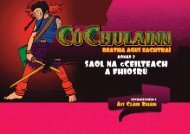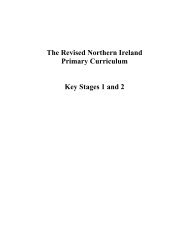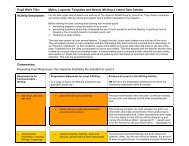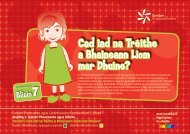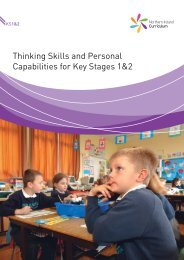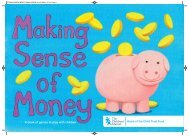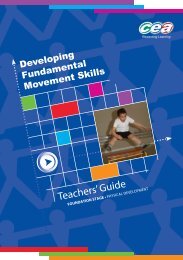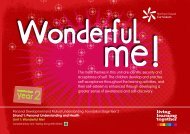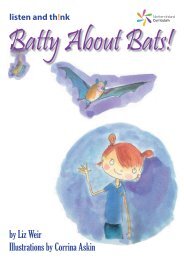Novel Quests Unique
Novel Quests Unique
Novel Quests Unique
You also want an ePaper? Increase the reach of your titles
YUMPU automatically turns print PDFs into web optimized ePapers that Google loves.
<strong>Novel</strong> <strong>Quests</strong>: <strong>Unique</strong><br />
Chapter by Chapter<br />
Suggested Learning and Teaching Activities<br />
In this section, we have suggested activities that would be appropriate<br />
at specific points in your pupils’ reading. However, this can be flexible;<br />
you may wish to change the order to suit your scheme of work.<br />
Prologue<br />
A Literary Introduction<br />
Ask the pupils if they know what the word<br />
‘prologue’ means and what purpose a prologue<br />
can serve at the beginning of a novel. Read the<br />
prologue of <strong>Unique</strong> as a class. Have the pupils, in<br />
pairs, note down what questions it raises and why<br />
Alison Allen-Gray might have included it. Make<br />
notes of their suggestions on the board.<br />
Give the pupils an opportunity to draw or paint a<br />
visual version of the prologue; the language used is<br />
very descriptive, and they might find it interesting<br />
to articulate the ominous tone using found images,<br />
their own drawings and colours.<br />
New vocabulary<br />
Prologue<br />
Chapter 1<br />
First Impressions:<br />
Dominic and Michael Gordon<br />
You could set this activity or <strong>Novel</strong> Openings<br />
(below) as a reading exercise and use it to<br />
practise the redrafting process. After reading this<br />
chapter, ask the pupils to make notes on their first<br />
impressions of Dominic and his father, Michael<br />
Gordon, using Resource 1: Analysing Character.<br />
You could also ask them to note the signifiers of<br />
wealth associated with Michael Gordon.<br />
Elicit a few suggestions about what the pupils have<br />
learned from the chapter, and use some of these<br />
to model Point–Evidence–Explanation paragraphs<br />
on the board. Use the Thumb Tool technique (see<br />
CCEA’s Active Learning and Teaching Methods for<br />
Key Stage 3) to ensure that the pupils understand<br />
the structure and how they could use it. Ask them<br />
to complete an individual piece of work, using the<br />
points and examples from their resource sheet to<br />
write a first impressions character study on one of<br />
the characters.<br />
4



